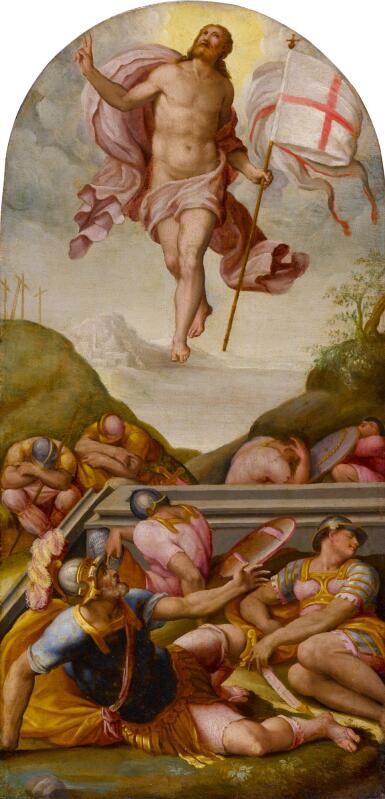
Tommaso d'Antonio Manzuoli, called Maso da San Friano
The Resurrection of Christ
Auction Closed
October 18, 03:29 PM GMT
Estimate
100,000 - 150,000 USD
Lot Details
Description
Tommaso d'Antonio Manzuoli, called Maso da San Friano
Florence circa 1532 - 1571
The Resurrection of Christ
tempera on panel, with an arched top
panel: 12 1/4 by 6 1/4 in.; 31 by 16 cm.
Private collection, England;
Anonymous sale, London, Phillips, 7 July 1992, lot 47 (as Attributed to Marcello Venusti);
There acquired by Richard L. Feigen.
P. Costamagna, "Continuity and Innovation: The Art of Maso da San Friano," in Continuity, Innovation and Connoisseurship: Old Master Paintings at the Palmer Museum of Art, University Park, Pennsylvania 2003, p. 41;
L. Kanter and J. Marciari, Italian Paintings from the Richard L. Feigen Collection, New Haven 2010, pp. 118-121, cat. no. 36, reproduced.
Although relatively little is known of Maso's early training, he was a disciple of Andrea del Sarto and Pontormo, as can be seen in the monumental construction of his figures as well as in his color palette, which is derived from Pontormo's bold and coloristic sensibility. According to Vasari, he trained with Pier Francesco Foschi, whose predilection for simple, severe compositions inspired by Florentine High Renaissance models became an important element of Maso’s style. Foschi’s adaptation of Pontormo’s elongated facial types and mannerist interpretation of sacred themes also influenced Maso. Held in high regard by his contemporaries, Maso received an important commission in 1570-1571 for work on the decoration of the studiolo of Francesco I in the Palazzo Vecchio, completing two works -- The Diamond Mine and The Fall of Icarus -- for his patron.
The composition of the present painting is nearly identical to that seen in a Resurrection of Christ in the Kunsthistorisches Museum, Vienna, where it had previously been considered a Florentine painting of circa 1560. The Vienna Resurrection had also previously been given to Francesco Salviati, and more recently has been attributed to Giulio Clovio by Philippe Costamagna. Costamagna, along with Robert Simon and Larry Feinberg previously attributed this panel to Maso da San Friano, an attribution endorsed in print by both Larry Kanter and John Marciari, the latter of whom also gives the Vienna picture to Maso.1
1. See Kanter and Marciari 2010, pp. 118-120.
You May Also Like










